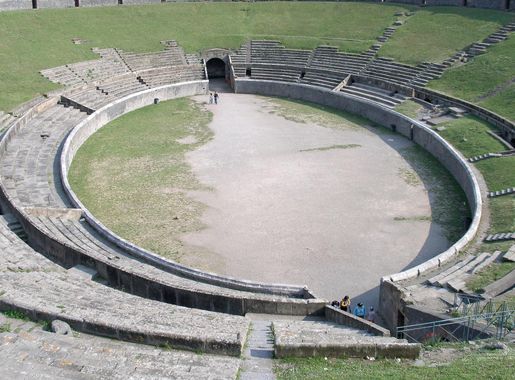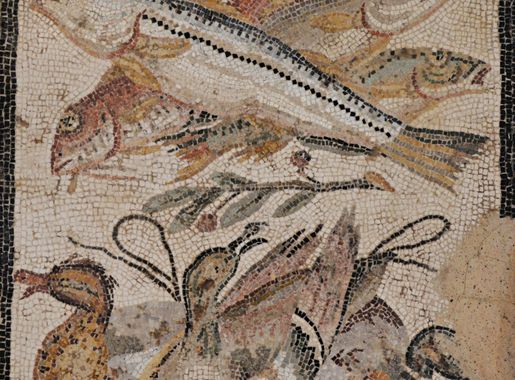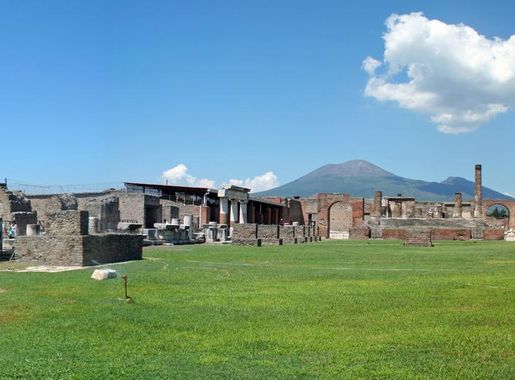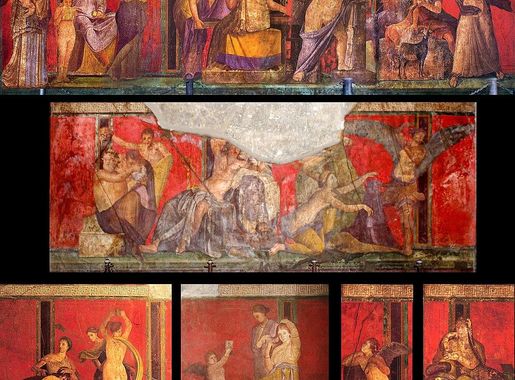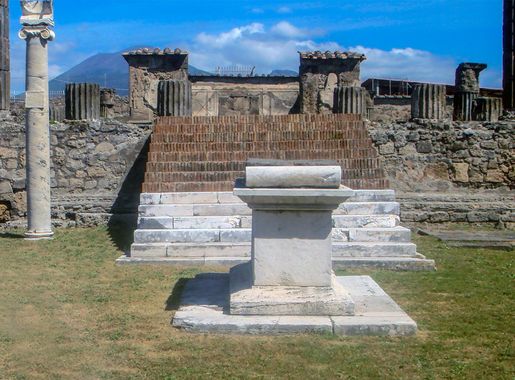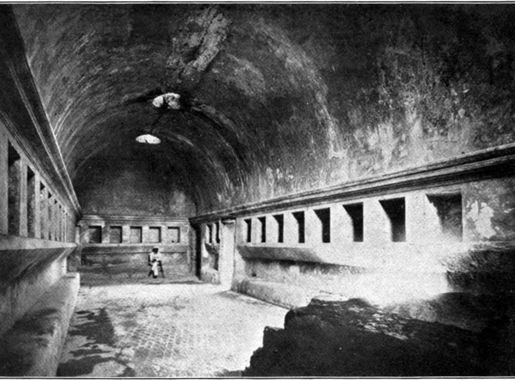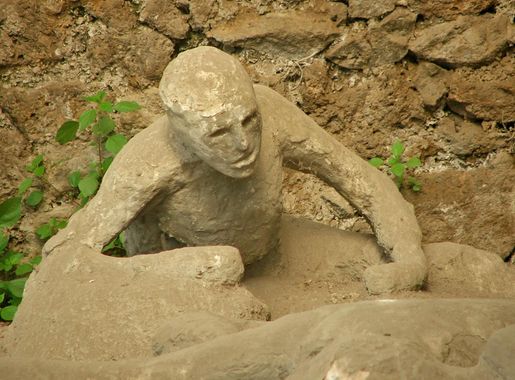
Discover the Timeless Ruins of Pompeii Archaeological Park
Explore the ancient ruins of Pompeii Archaeological Park, a captivating UNESCO World Heritage site offering a unique window into Roman life frozen in time by volcanic ash.
Step into the past at Pompeii Archaeological Park, where history comes alive through the well-preserved ruins of a once-thriving Roman city. Buried under volcanic ash from Mount Vesuvius's catastrophic eruption in 79 AD, Pompeii offers an extraordinary glimpse into ancient Roman life, frozen in time. Wander through cobblestone streets lined with ancient buildings, from grand villas and bustling marketplaces to humble homes and public baths. Each structure tells a story, with vibrant frescoes, intricate mosaics, and everyday artifacts revealing the daily lives, customs, and culture of Pompeii's inhabitants. The park's highlights include the Forum, the city's political and economic heart, and the awe-inspiring Amphitheater, one of the oldest surviving Roman arenas. Don't miss the hauntingly preserved plaster casts of the volcano's victims, a poignant reminder of the eruption's human toll. Whether you're a history buff or a curious traveler, Pompeii Archaeological Park promises a journey unlike any other.
Local tips in Pompeii Archaeological Park
- Wear comfortable shoes; the terrain is uneven and requires a lot of walking.
- Visit early in the morning or late in the afternoon to avoid crowds and the midday heat.
- Bring water and snacks, as amenities within the park are limited.
- Consider hiring a local guide for an enriched understanding of the site’s history and significance.
- Check the weather forecast and bring sun protection, such as hats and sunscreen, especially during summer.
Discover the Timeless Ruins of Pompeii Archaeological Park
Step into the past at Pompeii Archaeological Park, where history comes alive through the well-preserved ruins of a once-thriving Roman city. Buried under volcanic ash from Mount Vesuvius's catastrophic eruption in 79 AD, Pompeii offers an extraordinary glimpse into ancient Roman life, frozen in time. Wander through cobblestone streets lined with ancient buildings, from grand villas and bustling marketplaces to humble homes and public baths. Each structure tells a story, with vibrant frescoes, intricate mosaics, and everyday artifacts revealing the daily lives, customs, and culture of Pompeii's inhabitants. The park's highlights include the Forum, the city's political and economic heart, and the awe-inspiring Amphitheater, one of the oldest surviving Roman arenas. Don't miss the hauntingly preserved plaster casts of the volcano's victims, a poignant reminder of the eruption's human toll. Whether you're a history buff or a curious traveler, Pompeii Archaeological Park promises a journey unlike any other.
Iconic landmarks you can’t miss
Pompeii Archaeological Park
Discover the haunting beauty of Pompeii Archaeological Park, a UNESCO World Heritage site that reveals the extraordinary remnants of ancient Rome.
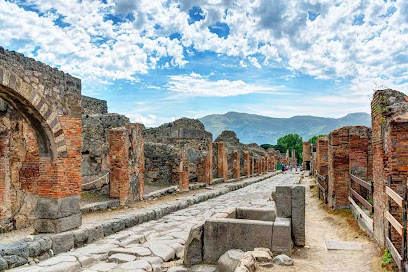
Scavi di Pompei
Discover the ancient city of Pompeii, a UNESCO World Heritage Site, where history comes alive amidst the ruins of a once-thriving Roman civilization.

Foro di Pompei
Discover the rich history of ancient Rome at Foro di Pompei, a UNESCO World Heritage site filled with stunning ruins and captivating stories.

Pompeii (UNESCO)
Discover the ancient wonders of Pompeii, a UNESCO World Heritage site, where history and tragedy intertwine in spectacular ruins.
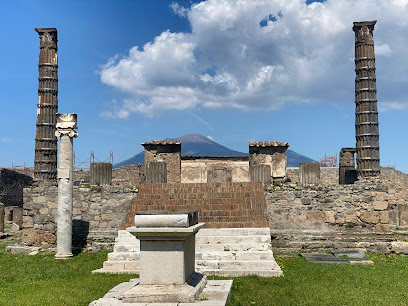
House of the Cryptoporticus
Discover the House of the Cryptoporticus in Pompeii, where ancient Roman life and artistry come alive amidst stunning frescoes and historic architecture.

House of Lucretius Fronto
Explore the House of Lucretius Fronto in Pompeii, where stunning frescoes and rich history bring ancient Roman life to vivid reality.
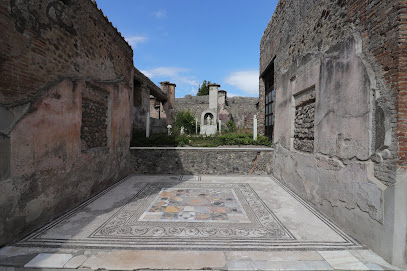
House of Pansa
Explore the House of Pansa in Pompeii, a stunning archaeological site showcasing ancient Roman art and architecture in a captivating setting.
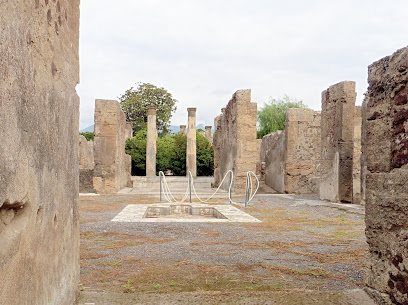
Casa della Caccia Antica
Explore the timeless beauty of Casa della Caccia Antica, a magnificent monument revealing the opulence of ancient Roman life in the heart of Pompei.
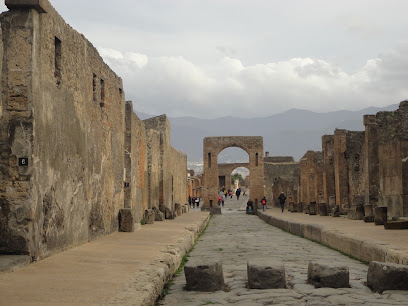
Casa di Obellio Firmo
Explore the captivating ruins of Casa di Obellio Firmo, an archaeological gem in Pompeii showcasing ancient Roman life through stunning frescoes and mosaics.
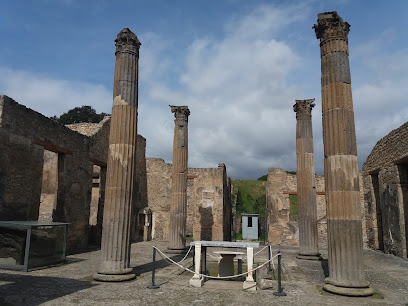
House of the Arches
Uncover the allure of ancient Rome at the House of the Arches in Pompeii, a stunning archaeological site filled with history and architectural beauty.
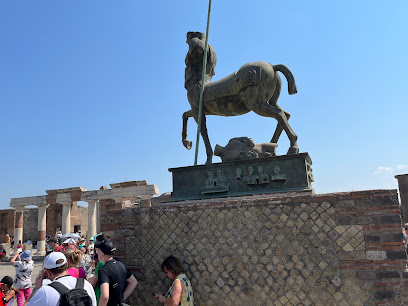
Unmissable attractions to see
Necropoli di Porta Ercolano
Discover the Necropoli di Porta Ercolano, an archaeological gem showcasing the artistry and history of ancient Pompeii's burial sites.
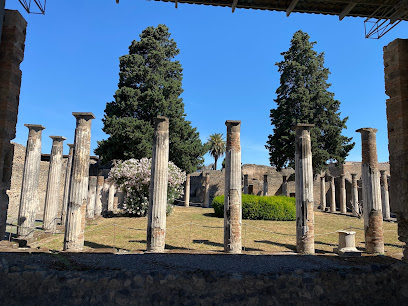
Casa degli Amorini Dorati
Discover the exquisite Casa degli Amorini Dorati in Pompeii, an archaeological gem showcasing stunning frescoes and ancient Roman elegance.
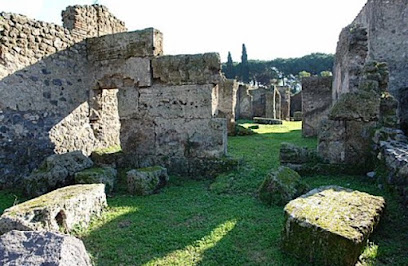
Casa della Fontana Grande
Explore the Casa della Fontana Grande in Pompeii - an ancient Roman treasure with stunning frescoes and a beautiful garden.
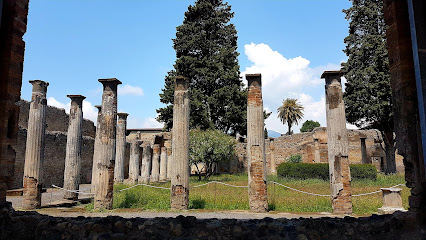
House of Lucretius Fronto
Explore the House of Lucretius Fronto in Pompeii, a captivating archaeological site revealing the splendor of ancient Roman life through its stunning frescoes and architecture.
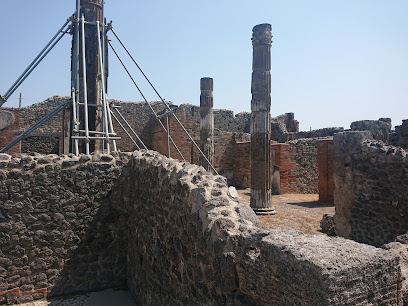
House of Pansa
Discover the House of Pansa in Pompeii: an archaeological gem showcasing the opulence of ancient Roman life through stunning frescoes and mosaics.

Casa di Obellio Firmo
Discover the captivating history of the Casa di Obellio Firmo, a stunning archaeological site in Pompeii that reveals the life of ancient Romans.
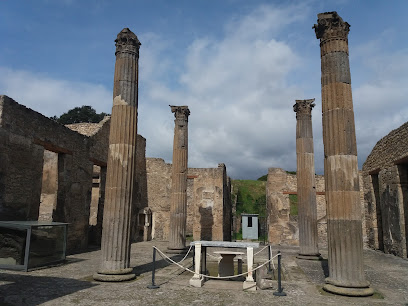
House of the Arches
Explore the House of the Arches in Pompeii, an archaeological marvel showcasing Roman architecture and art in a captivating historical setting.
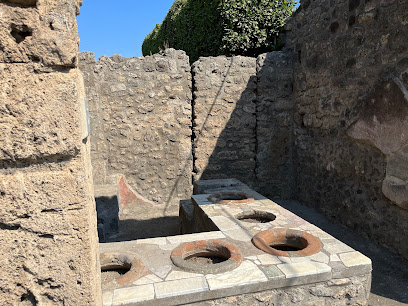
Essential places to dine
Le Delizie Pompei via Roma 83
Discover authentic Italian cuisine at Le Delizie Pompei - where every dish tells a story.
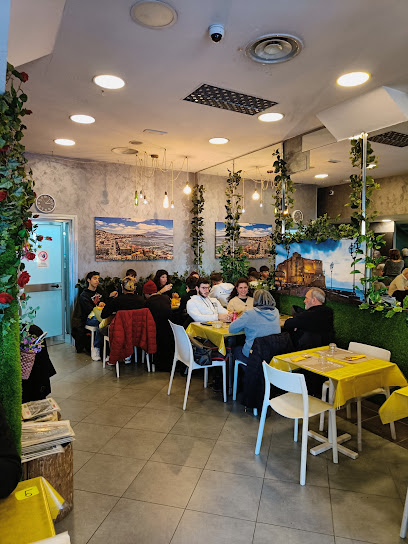
Caupona Pompei Ristorante
Experience authentic Italian cuisine at Caupona Pompei Ristorante near Pompeii's historic ruins—where every meal is steeped in tradition.
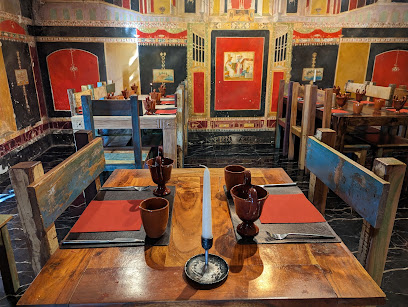
La Bettola Del Gusto
Experience authentic Italian cuisine at La Bettola Del Gusto in Pompei – where seafood meets steak in a delightful culinary fusion.
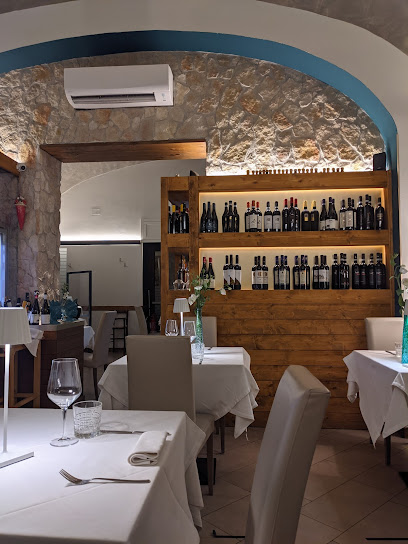
Caupona Pompeii
Experience authentic Roman cuisine at Caupona Pompeii—where every meal tells a story of ancient culinary traditions.
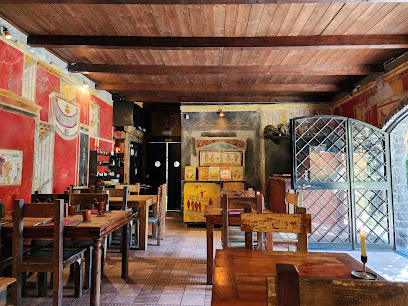
Na' Pasta
Experience authentic Italian cuisine at Na' Pasta in Pompei, where every dish is a celebration of flavor and tradition.
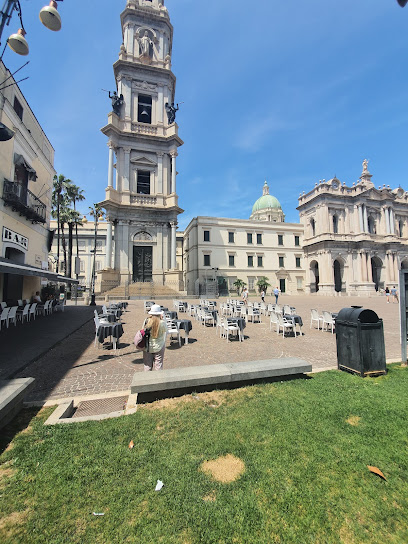
Varnelli Pizzeria Bistrot Ristorante
Discover authentic Italian flavors at Varnelli Pizzeria Bistrot Ristorante in Pompei – where delicious pizzas meet inviting ambiance.
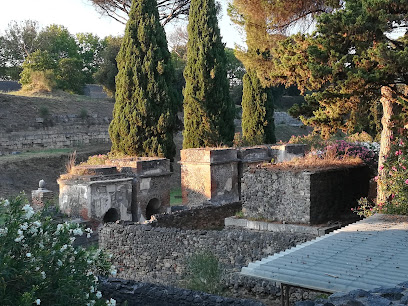
Mercato Pompeiano Restaurant
Experience authentic Italian cuisine at Mercato Pompeiano Restaurant in Pompei, where every dish tells a story of tradition and flavor.
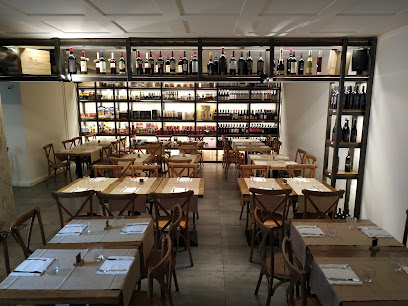
Garum Pompei - Ristorante - Enoteca
Discover the best seafood dining in Pompei at Garum Pompei - where tradition meets gourmet cuisine in a charming setting.
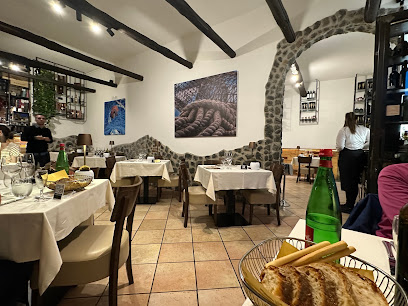
Stuzzico By Lucius
Discover authentic Italian cuisine at Stuzzico By Lucius in Pompei – where every dish tells a story.
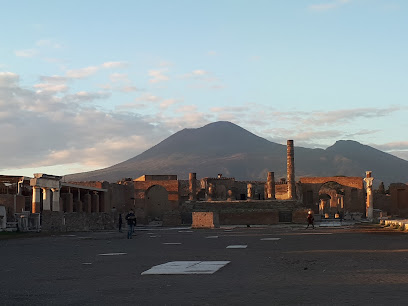
Ventuno grammi - anima in cucina
Experience authentic Italian flavors at Ventuno Grammi - Anima in Cucina, where every dish tells a story of tradition and passion.
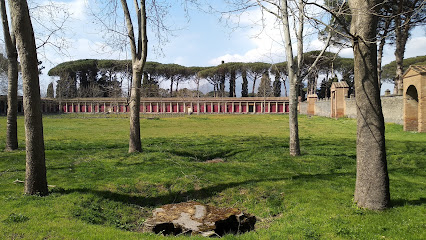
Ristorante Pizzeria Bellavie
Experience authentic Italian cuisine at Ristorante Pizzeria Bellavie in Pompei, where every dish tells a story steeped in tradition.
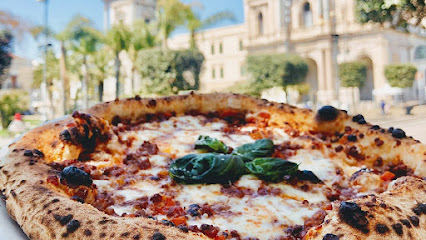
Bistrot Fratelli Cannavacciuolo
Experience exquisite Italian cuisine at Bistrot Fratelli Cannavacciuolo in Pompei - where tradition meets innovation in every dish.

Cosmo Restaurant Pompei
Experience authentic Italian cuisine at Cosmo Restaurant Pompei – where tradition meets flavor in every dish.
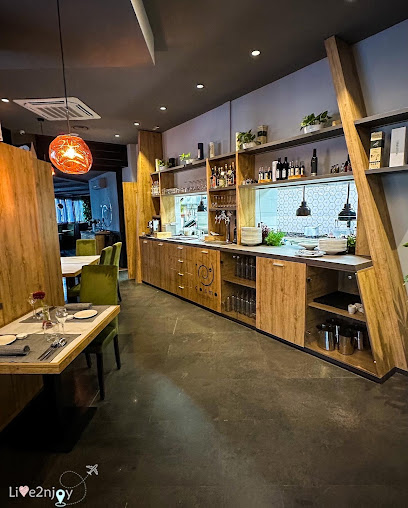
Osteria Nonna Cherubina
Experience authentic Italian cuisine at Osteria Nonna Cherubina in Pompei - where every dish tells a story.
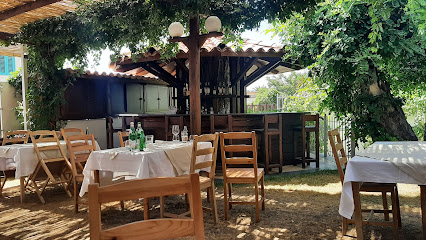
Markets, malls and hidden boutiques
Pipol
Discover unique fashion and accessories at Pipol, a charming boutique in Pompei, perfect for travelers seeking local style.
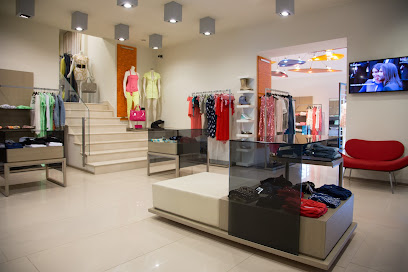
Tufano Moda - Pompei
Discover the latest in Italian fashion at Tufano Moda in Pompei, where style meets tradition and every piece tells a story.
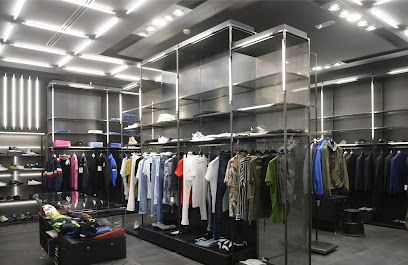
GIORDANO BOUTIQUE
Discover the latest fashion trends at Giordano Boutique in Pompei, where style meets sophistication for every occasion.
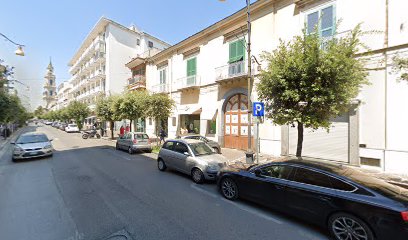
Boutique Rosalba Abbigliamento - Lacoste, Wrangler, Levi's
Explore fashionable finds at Boutique Rosalba Abbigliamento in Pompei, offering stylish clothing for men and women from top brands.
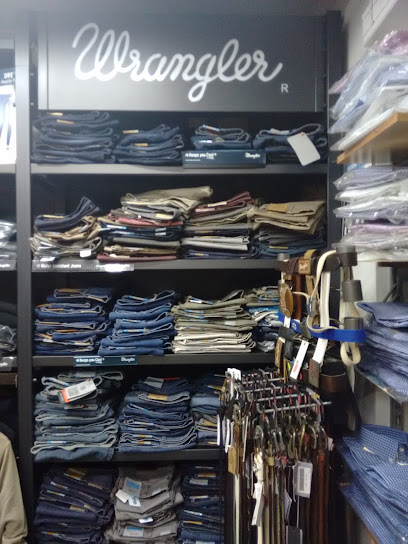
Boutique Demil Di Emilia Di Paolo
Experience the elegance of Italian fashion at Boutique Demil Di Emilia Di Paolo in Pompei, where style meets sophistication in every piece.
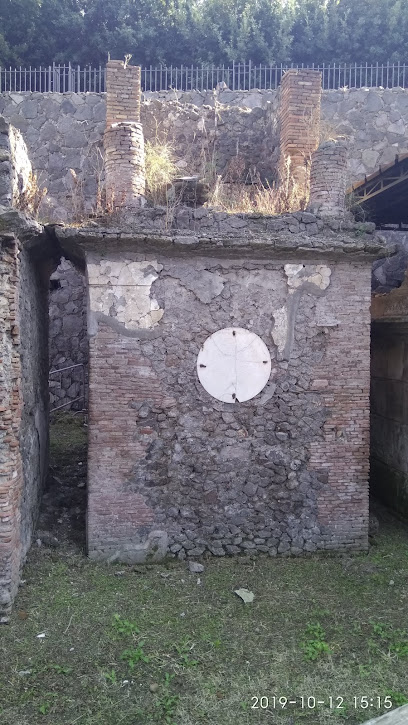
Cellini Gallery Cameos & Corals
Explore the exquisite artistry of Cellini Gallery, where stunning cameos and vibrant corals meet the rich heritage of Pompei, Italy.
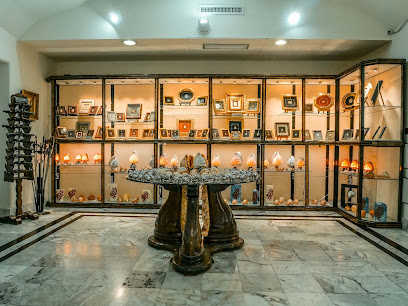
Ginseria
Explore Ginseria in Pompei for unique vintage clothing and a charming shopping experience that reflects fashion history.
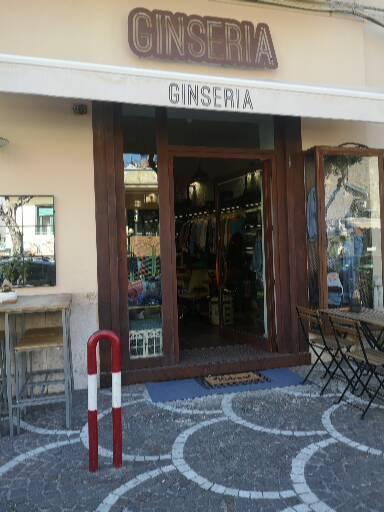
See Pompeii
Explore See Pompeii for unique souvenirs that capture the unforgettable spirit of this ancient Roman city.
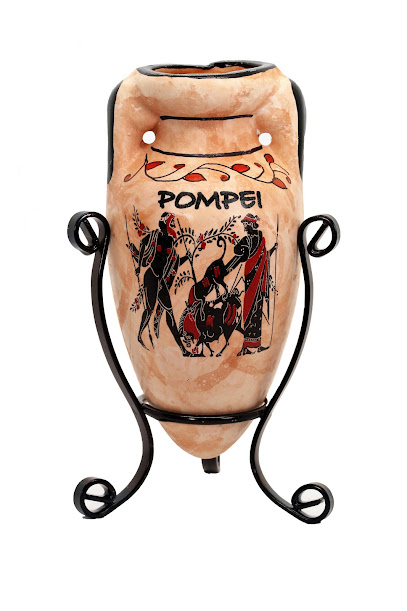
Aurum S.n.c.
Discover exquisite handcrafted fashion accessories at Aurum S.n.c. in Pompeii, a treasure trove of Italian craftsmanship and artistry.
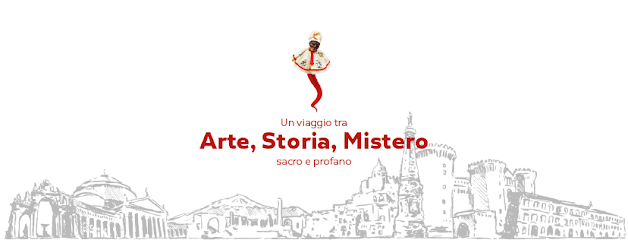
roberta falco shop
Explore the stylish offerings at Roberta Falco Shop in Pompei, where Italian fashion meets a unique shopping experience amidst ancient history.

Essential bars & hidden hideouts
Open Bar Pompei
Experience the vibrant atmosphere of Open Bar Pompei, a perfect spot for drinks and fast food near the historic ruins.
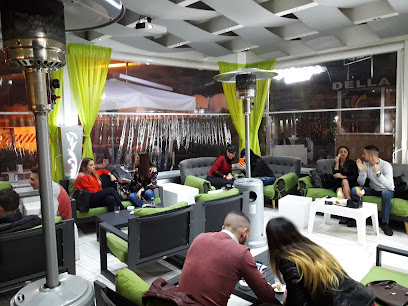
'Mericano (Pub - Steak House - Birreria) Pompei
Discover Mericano in Pompei: where traditional flavors and modern pub vibes create the perfect dining experience.

Pub27
Experience the lively atmosphere and local flavors at Pub27, the must-visit pub in Pompei for relaxation and socializing.
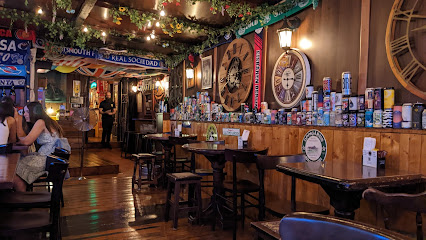
THE ROOF
Experience the allure of Pompeii at The Roof, where exquisite cocktails and dining meet stunning views of ancient ruins.
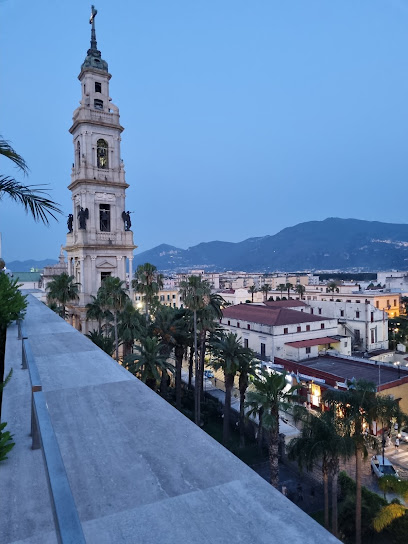
Delirum
Experience the vibrant atmosphere and unique cocktails at Delirum, Pompei's premier cocktail bar, perfect for unwinding after exploring ancient ruins.

The Dream 64
Experience the lively atmosphere and gourmet flavors at The Dream 64 in the heart of Pompei, a must-visit gastropub for every traveler.
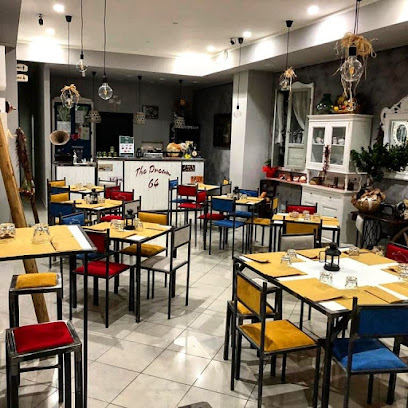
CAFFETTERIA STONE AGE
Discover the charm of Caffetteria Stone Age in Pompei, where authentic Italian coffee meets a cozy atmosphere.
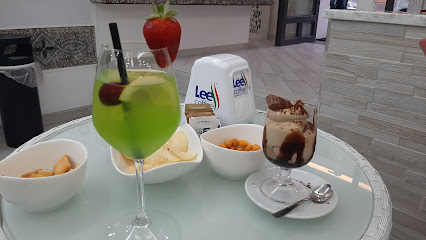
Methe Pompei
Discover authentic Italian flavors at Methe Pompei, a charming bar in the heart of Pompeii, perfect for relaxing after exploring ancient ruins.
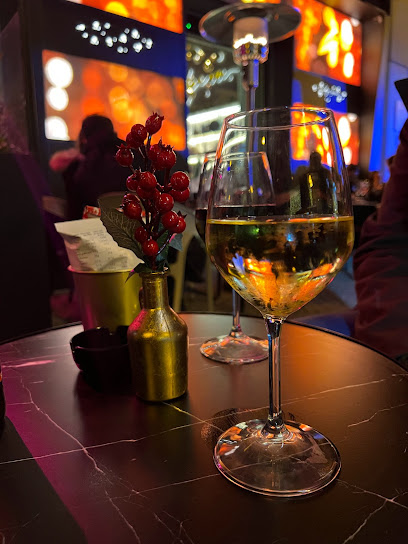
Pompei Via Roma
Discover the vibrant atmosphere and local delights at Pompei Via Roma, the perfect bar to unwind after exploring historic Pompei.
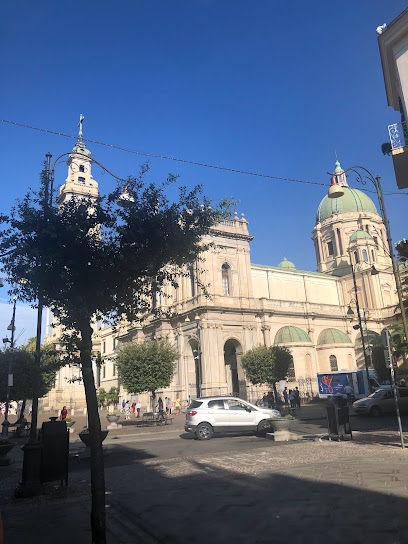
FOUR BASE
Experience the vibrant atmosphere and delightful drinks at FOUR BASE, the perfect bar for tourists in the heart of Pompei.

Local Phrases
-
- HelloCiao
[chow] - GoodbyeArrivederci
[ah-ree-veh-dehr-chee] - YesSì
[see] - NoNo
[noh] - Please/You're welcomePer favore/Prego
[pair fah-voh-reh/preh-goh] - Thank youGrazie
[grah-tsee-eh] - Excuse me/SorryScusa/Mi dispiace
[skoo-sah/mee dee-spyah-cheh] - How are you?Come stai?
[koh-meh stai] - Fine. And you?Bene. E tu?
[beh-neh. eh too] - Do you speak English?Parli inglese?
[pahr-lee een-gleh-zeh] - I don't understandNon capisco
[nohn kah-pee-skoh]
- HelloCiao
-
- I'd like to see the menu, pleaseVorrei vedere il menu, per favore
[vor-ray veh-deh-reh eel meh-noo, pair fah-voh-reh] - I don't eat meatNon mangio carne
[nohn mahn-joh kahr-neh] - Cheers!Salute!
[sah-loo-teh] - I would like to pay, pleaseVorrei pagare, per favore
[vor-ray pah-gah-reh, pair fah-voh-reh]
- I'd like to see the menu, pleaseVorrei vedere il menu, per favore
-
- Help!Aiuto!
[ah-yoo-toh] - Go away!Vai via!
[vai vee-ah] - Call the Police!Chiama la polizia!
[kee-ah-mah lah poh-lee-tsya] - Call a doctor!Chiama un dottore!
[kee-ah-mah oon doh-toh-reh] - I'm lostMi sono perso
[mee soh-no pehr-soh] - I'm illMi sento male
[mee sehn-toh mah-leh]
- Help!Aiuto!
-
- I'd like to buy...Vorrei comprare...
[vor-ray kohm-prah-reh] - I'm just lookingSto solo guardando
[stoh soh-loh gwar-dahn-doh] - How much is it?Quanto costa?
[kwahn-toh koh-stah] - That's too expensiveÈ troppo caro
[eh trohp-poh kah-roh] - Can you lower the price?Puoi abbassare il prezzo?
[pwoy ahb-bahs-sah-reh eel preh-tsoh]
- I'd like to buy...Vorrei comprare...
-
- What time is it?Che ora è?
[keh oh-rah eh] - It's one o'clockÈ l'una
[eh loo-nah] - Half past (10)Sono le dieci e mezza
[soh-no leh dyeh-chee eh meh-tsah] - MorningMattina
[mah-ttee-nah] - AfternoonPomeriggio
[poh-meh-ree-joh] - EveningSera
[seh-rah] - YesterdayIeri
[yeh-ree] - TodayOggi
[ohd-jee] - TomorrowDomani
[doh-mah-nee] - 1Uno
[oo-no] - 2Due
[doo-eh] - 3Tre
[treh] - 4Quattro
[kwah-ttroh] - 5Cinque
[cheen-kweh] - 6Sei
[seh-ee] - 7Sette
[seht-teh] - 8Otto
[oh-toh] - 9Nove
[noh-veh] - 10Dieci
[dyeh-chee]
- What time is it?Che ora è?
-
- Where's a/the...?Dov'è...?
[doh-veh] - What's the address?Qual è l'indirizzo?
[kwahl eh leen-deer-eet-zoh] - Can you show me (on the map)?Puoi farmi vedere (sulla mappa)?
[pwoy fahr-mee veh-deh-reh (sool-lah mahp-pah)] - When's the next (bus)?Quando passa il prossimo (autobus)?
[kwahn-doh pahs-sah eel prohs-see-moh (ow-toh-boos)] - A ticket (to ....)Un biglietto (per ....)
[oon beel-lyet-toh (pair)]
- Where's a/the...?Dov'è...?
History of Pompeii Archaeological Park
-
Pompeii was established in the 7th or 6th century BCE by the Osci, an Italic tribe. The city's strategic location near the Bay of Naples allowed it to thrive as a center for trade and agriculture. Over the centuries, Pompeii developed into a flourishing Roman municipality, showcasing a blend of various cultural influences due to its interactions with neighboring civilizations.
-
The most significant event in Pompeii's history occurred in August 79 CE when Mount Vesuvius erupted catastrophically. The city was buried under a thick blanket of volcanic ash and pumice, preserving its buildings, artifacts, and even the remains of its inhabitants. This eruption halted life in Pompeii, effectively freezing the city in time and providing a unique archaeological snapshot of Roman life.
-
Pompeii was rediscovered in the mid-18th century, with excavations beginning in 1748 under the direction of Spanish engineer Rocque Joaquín de Alcubierre. The systematic excavation revealed well-preserved ruins, providing invaluable insights into Roman urban planning, architecture, and daily life. These discoveries sparked a wave of interest in classical antiquity across Europe.
-
In 1997, Pompeii was designated as a UNESCO World Heritage Site, recognizing its outstanding universal value and the need for its preservation. This status has helped to promote conservation efforts and increase global awareness of Pompeii's cultural significance, attracting millions of visitors each year to explore its ancient streets and structures.
-
Since its rediscovery, ongoing archaeological research and preservation efforts continue to uncover new findings and protect the site from environmental threats. The Pompeii Archaeological Park, established to manage the site, engages in restoration projects and scientific studies aimed at understanding the city's past and ensuring its preservation for future generations.
Pompeii Archaeological Park Essentials
-
Pompeii Archaeological Park is easily accessible from Naples, which is approximately 30 kilometers away. From Naples, you can take the Circumvesuviana train line to the Pompeii Scavi station, which is a short walk from the park entrance. Alternatively, buses connect Pompeii with nearby towns, including Sorrento and Herculaneum. If you are driving, the park is well-signposted from the A3 motorway, and there are parking facilities available nearby.
-
The best way to explore Pompeii Archaeological Park is on foot, as the site is vast and many of the ruins are spread out. Inside the park, you can rent audio guides or join a guided tour. There are also information points scattered throughout the site. For those looking to explore the surrounding areas, the Circumvesuviana train line provides easy access to other archaeological sites and towns, while local taxis and buses are available for longer distances.
-
Pompeii is generally safe for tourists; however, standard precautions should be observed. The park itself is monitored, but be vigilant with your belongings in crowded areas. Avoid the outskirts of Pompeii at night, as some neighborhoods might have higher crime rates. Always keep an eye on your personal items, especially in busy tourist spots.
-
In case of emergency, dial 112 for police, fire, or medical assistance. The nearest hospital is located in Pompei, and there are pharmacies near the park for minor health issues. It's recommended to have travel insurance that covers medical emergencies. If you lose something valuable, report it to the local police station.
-
Fashion: Do wear comfortable shoes and lightweight clothing appropriate for the weather, as you'll be walking a lot. Don’t wear high heels or inappropriate attire. Religion: Do respect religious sites, maintain a quiet demeanor, and cover your shoulders when visiting temples. Public Transport: Do validate your tickets before boarding. Don’t eat or drink on public transport. Greetings: Do greet locals politely and use 'Buongiorno' during the day. Eating & Drinking: Do try local Neapolitan pizza and gelato. Don’t consume food or drink in the park, as it's prohibited.
-
To experience Pompeii like a local, visit the town of Pompei after exploring the ruins for authentic dining experiences. Try to learn a few basic Italian phrases, as locals appreciate when tourists make an effort to speak their language. Don't miss the local markets for fresh produce and local delicacies. Consider visiting off-peak hours to avoid crowds, allowing for a more intimate experience with the ruins.
Nearby Cities to Pompeii Archaeological Park
-
Things To Do in Herculaneum
-
Things To Do in Positano
-
Things To Do in Ravello
-
Things To Do in Amalfi
-
Things To Do in Sorrento
-
Things To Do in Naples
-
Things To Do in Capri
-
Things To Do in Matera
-
Things To Do in Bari
-
Things To Do in Rome
-
Things To Do in St. Peter's Square
-
Things To Do in Apostolic Palace
-
Things To Do in Vatican Necropolis
-
Things To Do in St. Peter's Basilica
-
Things To Do in Sistine Chapel

